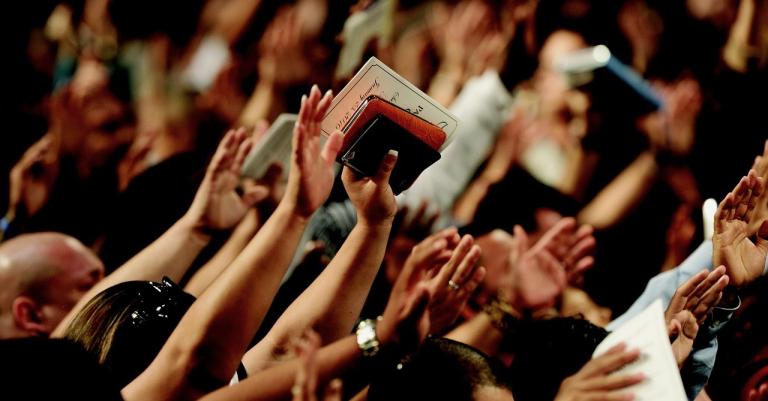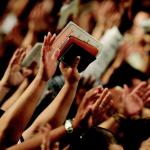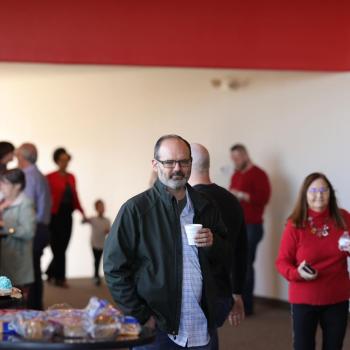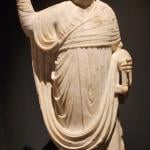Sharing Their Lives | Spirit Filled Community, pt. 6

In the Spirit Filled Community, the Early Church (E.C.) knows how to share. There are a couple of passages that tell us about all the Church shared (Acts 2.41-47; 4.32-5.12). Luke highlights the Early Church to inspire other Churches around the Roman Empire.
When we think of Spirit-filled living, we may think of spiritual formation. We may also think of spiritual formation in individualistic terms like personal discipleship, private devotions, interior life, etc. Although this focus is not inherently wrong, it is not entirely right. Near and Far Eastern regions during the time of Christ think in communal rather than individualistic terms. Therefore, spiritual formation is about building community, not merely the individual.
We find spiritual community formation in the Primitive Church. Acts 2 begins with the initial Pentecostal outpouring, an event that is personal, yet communal. By the end of the chapter, believers are added and a Christian community is established (verse 41).
Acts 2.41-42
Then they that gladly received his word were baptized: and the same day there were added unto them about three thousand souls.
And they continued stedfastly in the apostles’ doctrine and fellowship, and in breaking of bread, and in prayers.
“And they continued steadfastly.” This is in the imperfect tense denoting continual action – kept on continuing.
It’s the Greek word proskartereho, the same word used for “continued” in Acts 1.14. The root pro means forward direction. The root kartereo means strong, steadfast, patient, endure, etc. In other words it’s almost bullheaded, almost stubborn. It’s tenacious or steadfast.
The Early Church kept on continuing in these things until they became known for these things. These are the ways the E.C. shares their lives.
They steadfastly commit to doctrine, fellowship, breaking of bread, and prayers.
What is the Church known for now?
Do we keep on continuing in the mission that God has called us to?
How do we share our time and our lives?
I. DOCTRINE
Doctrine comes from the Greek word didache or teaching. They hold to the Apostle’s teaching, but are also eager to learn.
“The apostles, accordingly, made teaching the first priority of the newly founded church in Jerusalem. Moreover, the word ‘devoted‘ here strongly suggests that this teaching was an ongoing matter.”[1]
Teaching is understood to be discipleship
A couple of models are prominent in Israel at the time of Christ.
Hillel and Gamaliel are two prominent Rabbis. Gamaliel defends Apostles before the Sanhedrin (Acts 5.34-39). Gamaliel disciples Saul who later becomes Paul (Acts 22.3). Discipleship with Hillel or Gamaliel is like Harvard or Yale. This model of discipleship links a person with a Rabbi.
Another form of discipleship is found among groups like the Essenes who are a radical community of Jews. They are bent on translating Scripture and preserving Orthodox Judaism. However, they share everything and have all things in common.
Jesus blends the best of both
He is a magnificent teacher.
He also establishes a community of believers.
His form of discipleship continues with the Early Church.
“It [the Apostle’s preaching] was accompanied by instruction, so that as the number of believers increased, they were bound together in common knowledge and common action (2:42).”[2]
They are dedicated to learning and dedicated to each other.
The Apostle’s teaching is received through discipleship.
How far have we strayed from true discipleship? Our western idea of large classes with 1 instructor is impersonal. Discipleship requires teaching and relationship.
II. FELLOWSHIP
“fellowship,” koinonia
Koinonia can mean association, community, joint participation, to share anything, participation, the right hand of fellowship, intimacy, a collection, embodiment, etc. The term koinonia is also translated “communion,” meaning a deeper level of fellowship with both God and men.
Koinonia is often linked with “Love Feasts” or “Table Fellowship.”
“Jesus also began in Galilee the practice of having table fellowship with persons of various social classes and conditions of ritual impurity, including those regarded as sinners by other teachers of Torah. This practice of table fellowship challenged in a concrete manner the religious boundaries that separated people from one another in society. On the other hand, it tended to set Jesus and his own followers apart from others in society who did not share their convictions of the their willingness to break social boundaries.”[3]
Jesus starts Table Fellowship to blur the boundaries between us and unify us. Jesus then introduces communion to this Table Fellowship.
It’s important to note the E.C. in Acts does not make up this radical idea
Jesus invents Table Fellowship and implants it deep in the ministry of the Apostles. The Apostles teach it to the early Believers. Table Fellowship becomes a mark of the Early Church.
“Much of this sharing was in table fellowship. As they broke bread around the table in their homes, they shared their food with a fullness of overflowing joy and in simplicity of heart.”[4]
“Here was a tremendous sense of togetherness – in study, breaking bread, prayer – which the Holy Spirit had brought about. One of the key terms is ‘fellowship’ or ‘koinonia’; and the fact that they devoted themselves to koinonia signifies their profound new commitment to one another.”[5]
Do we fulfill an ancient purpose of the Church when we have a potluck?
III. BREAKING OF BREAD
This use of the phrase is linked to Communion or the Lord’s Table.
“‘The breaking of bread’ in all likelihood signified the Lord’s Supper. The word ‘fellowship’ (koinonia) may refer in part to the fellowship meal that preceded the sacramental breaking of bread. Hence the ‘breaking of bread’ points in a special way to the Lord’s Supper.”[6]
1 Corinthians 10.16-17
The cup of blessing which we bless, is it not the communion of the blood of Christ? The bread which we break, is it not the communion of the body of Christ?
For we being many are one bread, and one body: for we are all partakers of that one bread.
The breaking of bread not only symbolizes our healing.
The breaking of bread is Christ’s broken body for the unity of the Body of Christ. The fellowship of the Early Church is strengthened at the communion table.
The fellowship of the Body is key. Communion is celebrated as part of Table Fellowship.
1 Corinthians 11.27-30
Wherefore whosoever shall eat this bread, and drink this cup of the Lord, unworthily, shall be guilty of the body and blood of the Lord.
But let a man examine himself, and so let him eat of that bread, and drink of that cup.
For he that eateth and drinketh unworthily, eateth and drinketh damnation to himself, not discerning the Lord’s body.
For this cause many are weak and sickly among you, and many sleep.
If we can come to the Lord’s Table unworthily . . .
and the unity of the Body of Christ is essential to understanding communion . . .
then are we worthy to partake of the Body and Blood if we are divided?
IV. PRAYERS
“prayers,” proseuche can mean prayers, but it is also a designated place for prayers
In other words, people pray in private.
However, the Early Church also adopts ways of praying together.
In praying together there is power
For where two or three are gathered together in my name, there am I in the midst of them. (Matthew 18.20)
And when they had prayed, the place was shaken where they were assembled together; and they were all filled with the Holy Ghost, and they spake the word of God with boldness. (Acts 4.31; prayer 24-30)
It’s possible this form of the verb “prayed” indicates an on-going prayer
They could have been filled and the house could have shaken while they were still praying.
This verse also indicates that the Early Church experiences multiple fillings of the Holy Spirit.
“It would seem from these passages that, in addition to the initial experience of being filled, there may be subsequent fresh fillings from the Holy Spirit.”[7]
Are we missing a blessing by not sharing time together in prayer?
In praying together we learn how to pray
Jesus teaches the Disciples to pray with the Lord’s Prayer (Matthew 6.9-13; Luke 11.2-4).
Are we being challenged to grow in our prayer life?
pic credit: jaefrench | 01.03.17 | pixabay
For more writings on the Kingdom of God CLICK
notes:
- J. Rodman Williams, Renewal Theology: the Church, the Kingdom, and Last Things (Grand Rapids, MI: Zondervan, 1992), 110.
- Earle E. Cairns, Christianity Through The Centuries: A History Of The Christian Church (Grand Rapids, MI: Academie Books, 1981), 241.
- Dale T. Irvin and Scott W. Sunquist, History of the World Christian Movement, Volume I: Earliest Christianity to 1453 (Maryknoll, NY: Orbis Books, 2009), 24.
- Stanley M. Horton, What the Bible Says About the Holy Spirit, Rev. ed. (Springfield, MO: Gospel Publishing House, 2005), 149.
- J. Rodman Williams, Renewal Theology: Salvation, the Holy Spirit, and Christian Living (Grand Rapids, MI: Zondervan, 1990), 314-315.
- Williams, Renewal Theology: the Church, the Kingdom, and Last Things, 242.
- Williams, Renewal Theology: Salvation, the Holy Spirit, and Christian Living, 202.












